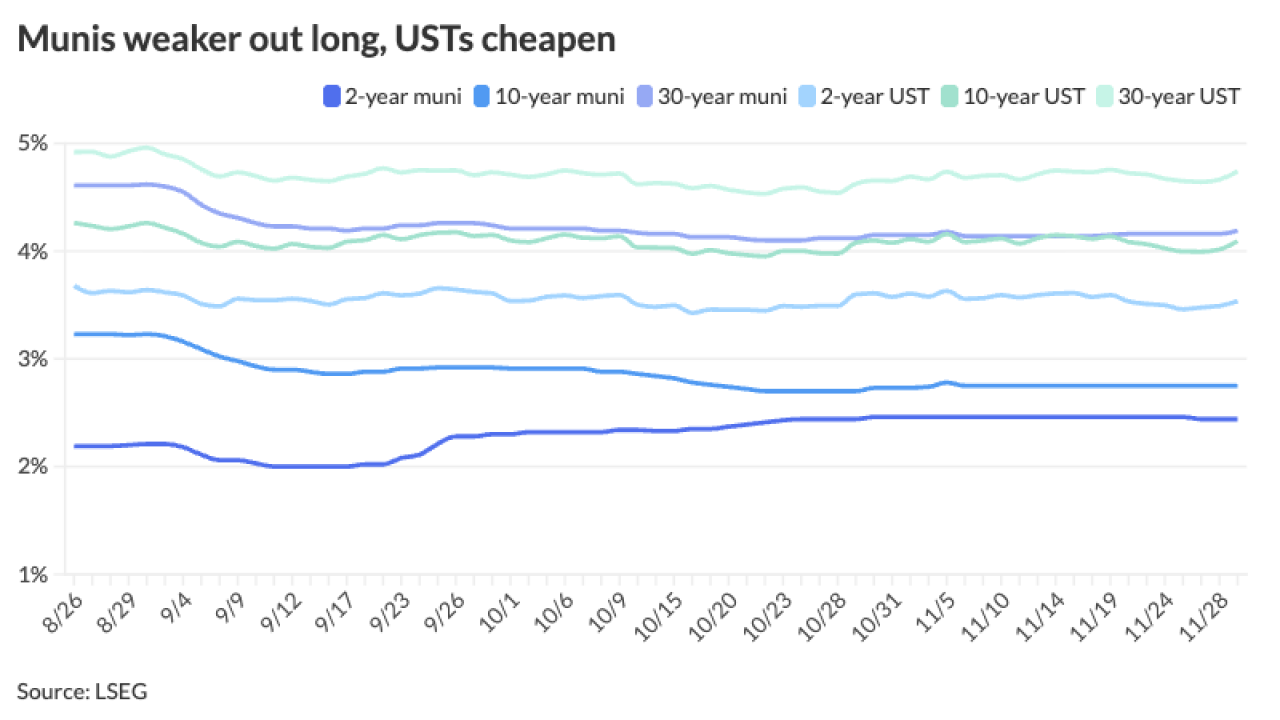Meeting public employee pension obligations and other retirement costs still poses a stiff challenge for many states, according to a
Six states received the lowest possible average grade of D-minus in legacy costs while more than twice as many scored only a D, the organization said Wednesday its second report card, titled "Truth and Integrity in State Budgeting: Preventing the Next Fiscal Crisis."

“That’s certainly one of the big takeaways,” said William Glasgall, the editor of the report and the Volcker Alliance's senior vice president and director for state and local initiatives. Glasgall called legacy costs "a big stress indicator."
Hawaii, Illinois, Massachusetts, New Jersey, Texas and Wyoming earned the lowest grades in that category. Scoring an A in legacy costs — which covers pensions and other post-employment benefits — were Idaho, Iowa, Nebraska, Oklahoma, Oregon, South Dakota, Utah and Wisconsin.
Only South Dakota had an overfunded pension plan. Wisconsin's was 100% funded.
“When you look at the states with very high fixed costs, like Illinois, which has high pension costs and debt service, there’s not a whole lot for things like infrastructure and K-through-12 education," Glasgall said.
The commission also graded states on budget forecasting; budget maneuvers, such as one-shot budget funding tricks; reserve funds; and transparency. The grading period for this report spanned fiscal 2016 through 2018.
"There is no F grade," said the report. "Even the most fiscally challenged states have some good budget practices."
No state received more than three As. California, Idaho and Utah received three.
“That was most surprising because California got D for its legacy cost issues. Only nine years ago California had to pay its bills with IOUs," Glasgall said. "California replenished its rainy-day fund, changed its rainy-day policy and cleaned up what used to be an extremely messy situation.”
Overall, grades paralleled last year's. “Nobody really fell off the bed," said Glasgall.
Grades followed no geographic patterns while larger and smaller states were equally likely to score well or badly. Grades also varied across categories within individual states, as in California. Hawaii, for instance, received a D-minus in the legacy costs category while earning an A for budget forecasting.
North Carolina built up its reserves despite political upheaval. “As the hurricane hit, the state was able to tap its surplus for $766 million out of its $2 billion reserve. That was a noteworthy thing," Glasgall said. The state was hit by Hurricane Florence in September.
Volcker Alliance leaders brief state budget officials throughout the year. “They understand that we’re there to help and not to throw rocks,” said Glasgall. “We managed a couple of legal wins. Utah named a bill after us.”
Utah’s new law called for a three-year planning process with baked-in stress testing. Wyoming and Vermont enacted midyear budget revisions that allocated more funding for rainy-day and pensions.
“They took to heart our recommendations that Vermont’s revenue is very volatile,” Glasgall said.
One adjustment from last year removed negative scores from states that adjusted budgets midyear. Some states, said Glasgall, encounter events they can’t control, such as storms.
Bondholders, he said, should note that 47 states failed to clarify the cost of deferred infrastructure maintenance. “That’s just like pension or bond debt,” he said.
Many states, he added, did not account for corporate incentives such as those for retail behemoth Amazon. He praised troubled states New Jersey and Illinois as well as AAA-rated Georgia for providing that detail.
According to Glasgall, Moody’s Analytics, S&P Global Ratings and the Federal Reserve Bank of Boston warn about the sensitivity of states to the personal income tax.
“Those states need more revenue or they’re going to suffer,” he said. “And a lot of those states are in the C or D category.”
The alliance based its grades on publicly available state budget documents and financial reports. Conducting the research were teams of public finance professors and graduate students at City University of New York; Florida International University; Georgia State University; University of California, Berkeley; University of Kentucky; the Chicago and Springfield campuses of the University of Illinois; and the University of Utah.
Volcker Alliance staff, data consultants at Municipal Market Analytics and special project consultants Katherine Barrett and Richard Greene also contributed.





